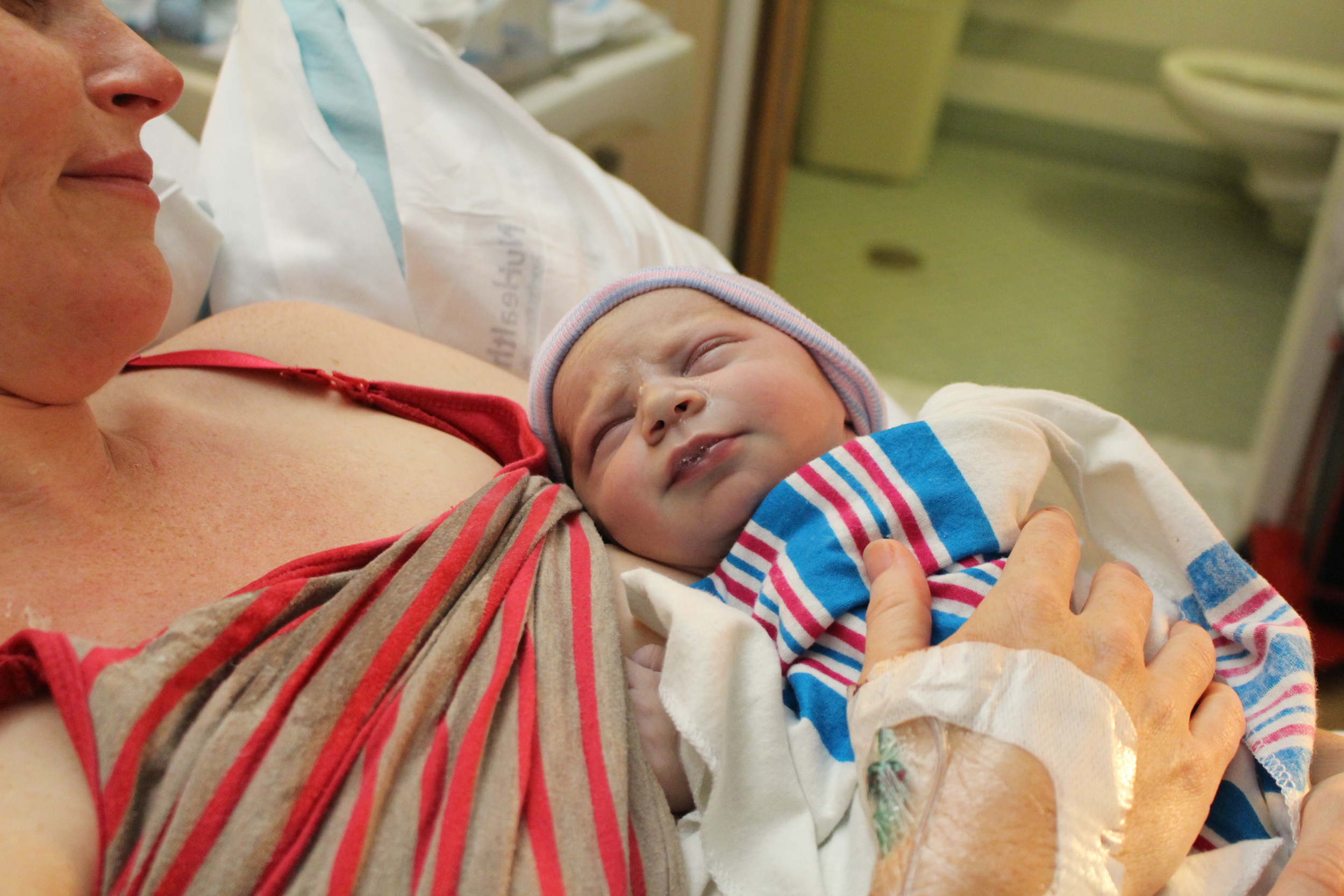With each of my pregnancies I have gained the majority of my weight in the second trimester. As many women gain their highest amount in the third trimester or at least maintain a steady weight gain, this had myself and my providers nervous in the past.
The first time around, I was the nervous one. However, if memory serves me correctly, I didn’t gain any weight after 32 weeks and found myself delivering at the low end of my pre-pregnancy weight gain recommendation*. The second time around, it was my providers who were a little nervous. At 26 weeks I had gained 19 lbs, and was on track to gain about 35 lbs if the momentum stayed the same throughout my pregnancy. Somehow I found myself at the exact same weight gain as my first when delivering my second.
This time around I am on a similar weight gain pattern, and if history serves me well, the weight gain should start to slow down soon. But with my first VBAC pregnancy, I had to ask myself, why does my provider care so much if I gain 35 lbs? At the time I did a literature search and found gaining weight above the Institute of Medicine’s recommendation was negatively associated with successful VBAC. I was curious to see if any new literature had surfaced since that time. Here is what I found.
This article studied women considered high-risk during pregnancy, classified by hypertension, diabetes, and/or obesity. The researchers found women who gained more than the weight gain recommendations were less likely to have a VBAC. The abstract states the weight of 30lbs, but I did not find this specification in the article, just the description of exceeding recommended weight gain based on pre-pregnancy BMI. The study did not seem to consider pre-pregnancy BMI and weight gain separate from the other high-risk factors, though the majority (63%) in the study were obese. What I mean by this is, was the weight gain more impactful if the woman was already obese?
This article looked at pre-pregnancy BMI and weight gain. Both obesity and excessive weight gain, 40lbs in this article, were negatively associated with VBAC. The abstract spells out the different rates.
I found this article a little bit difficult to follow. In the abstract the authors state a BMI >25 is significantly associated with a decreased success rate. While, it never states when the BMI was measured, I can only assume that it is the labor admission BMI, as all of the other variables measured were upon labor admission (gestational age, cervical dilation, etc.). Essentially, only 20% of those in the successful VBAC group had a BMI >25, while 58% of those in the failed VBAC group had a BMI >25. The amount of weight gain that this would relate to varies, depending on a woman’s starting BMI.
Lastly, this article discussed weight gain between the first and second pregnancy. An increasing BMI between pregnancies was associated with a decreased success rate, and a decreasing BMI in women who were overweight or obese before their first pregnancy was associated with a higher success rate. If you aren’t already pregnant, and are planning a VBAC with your next pregnancy, you may want to pay attention to your inter-pregnancy weight.
To be clear, none of the authors stated that a high weight gain or BMI at the time of delivery was an indication to have a planned repeat cesarean. They were only exploring factors associated with a successful VBAC. That said, it may be prudent to only gain within the IOM’s recommendations for pregnancy weight gain while planning a VBAC.
*every woman's weight gain pattern varies during pregnancy. My own story is not an example of how it should/should not be done.







